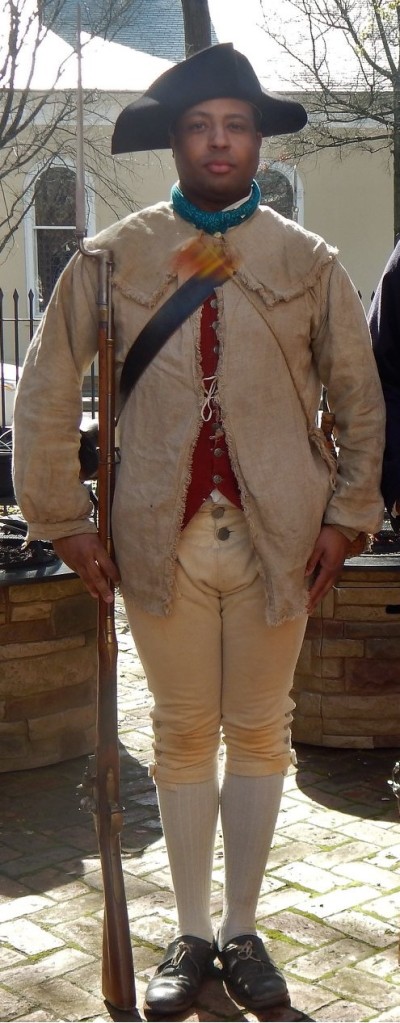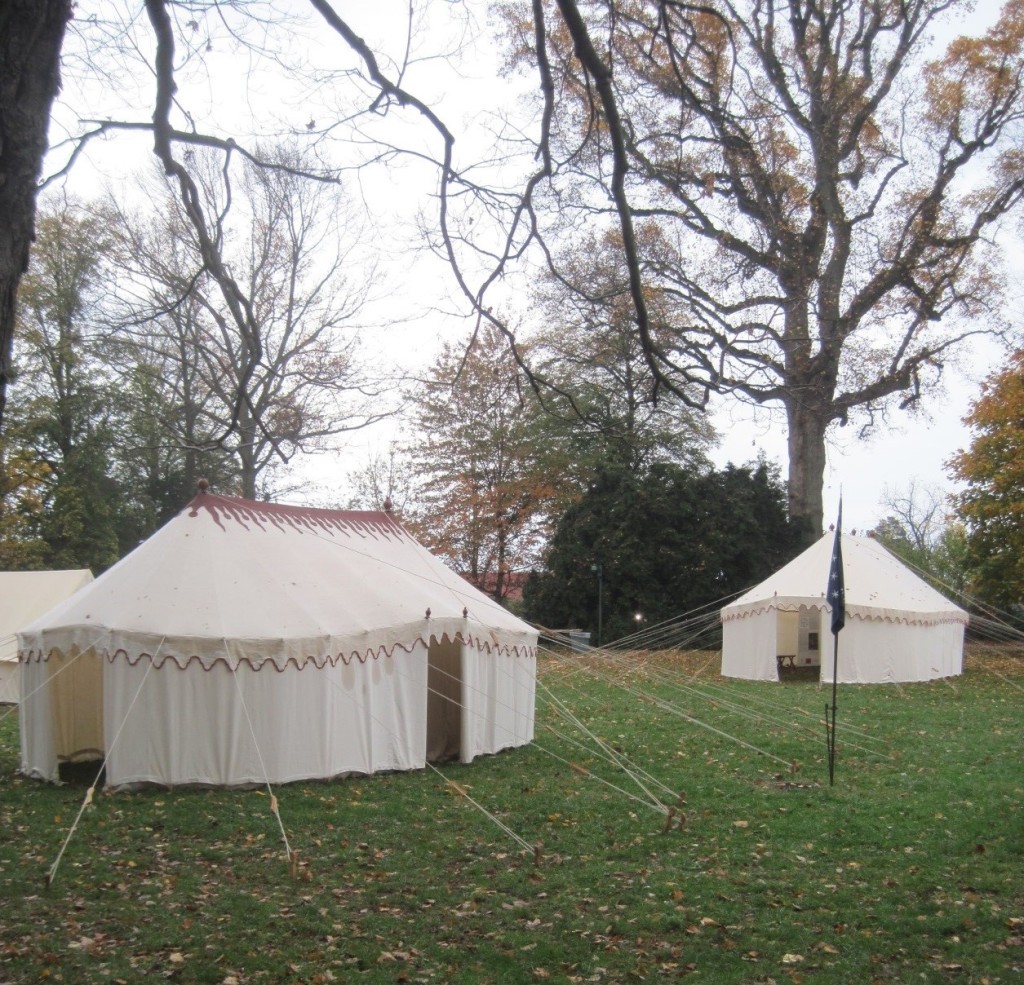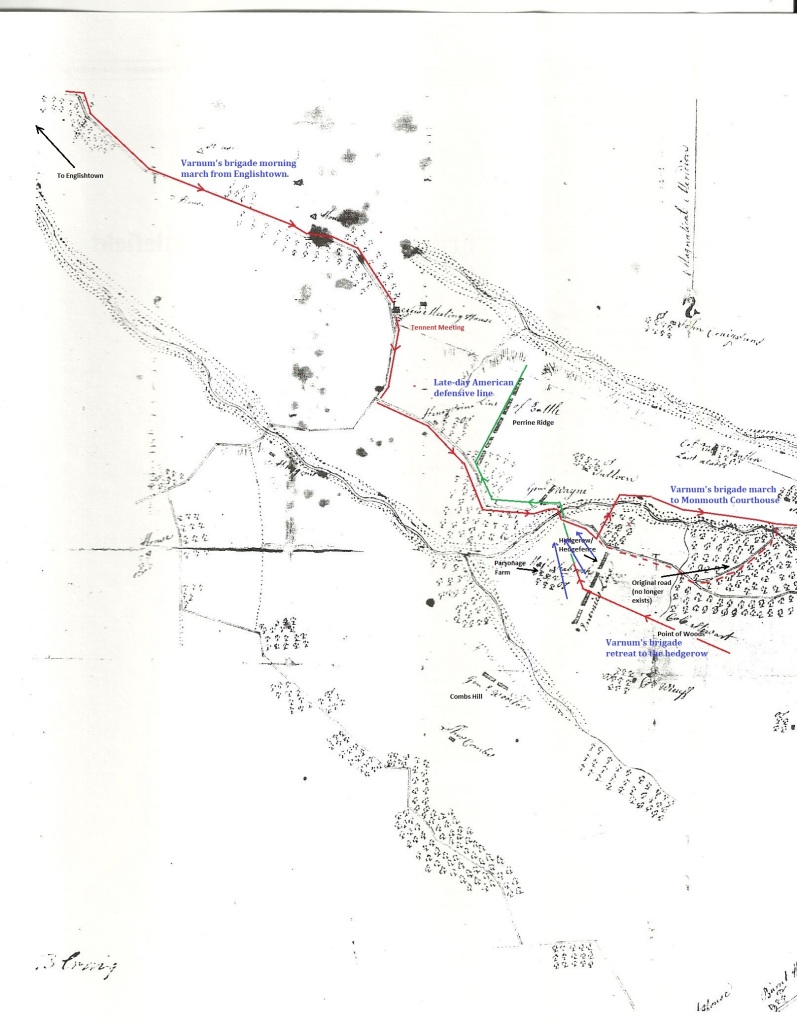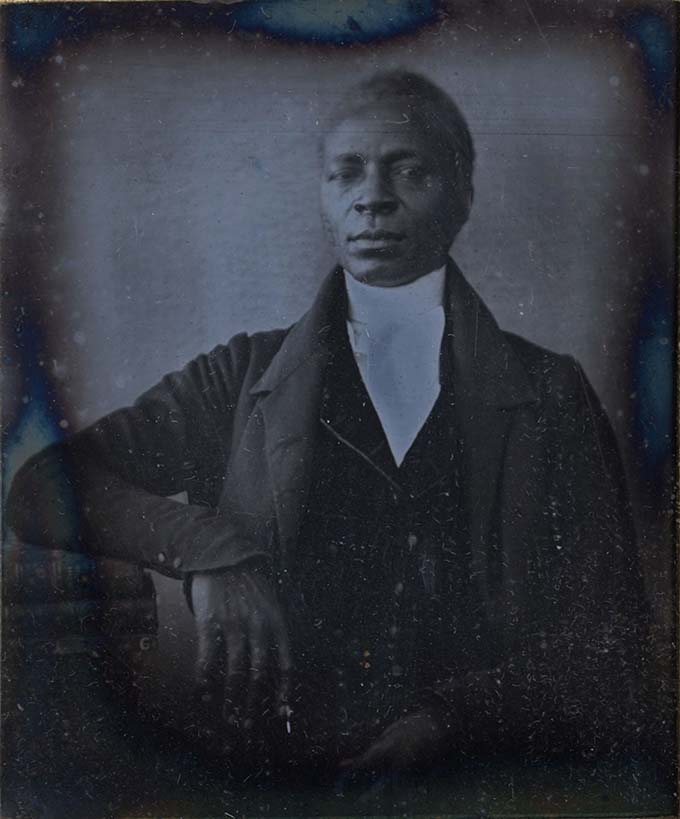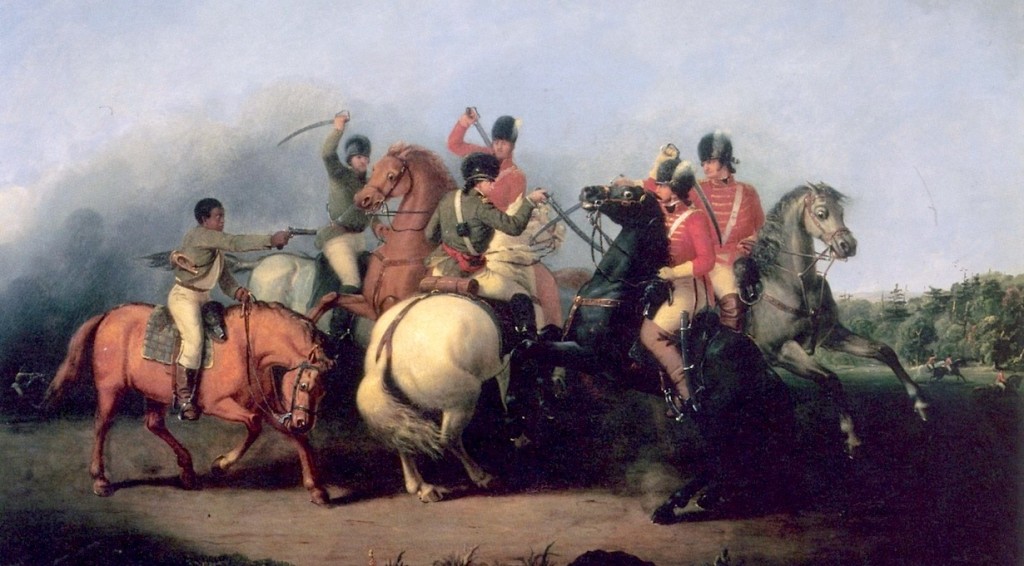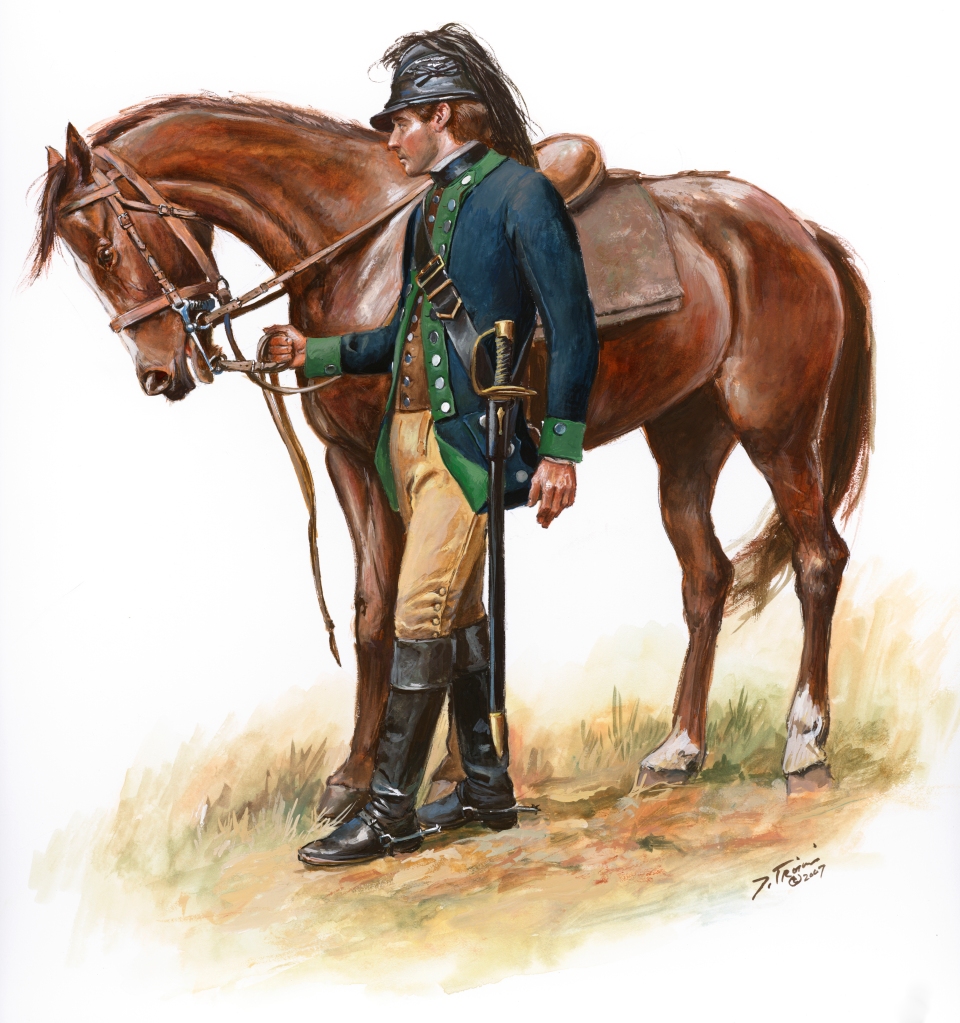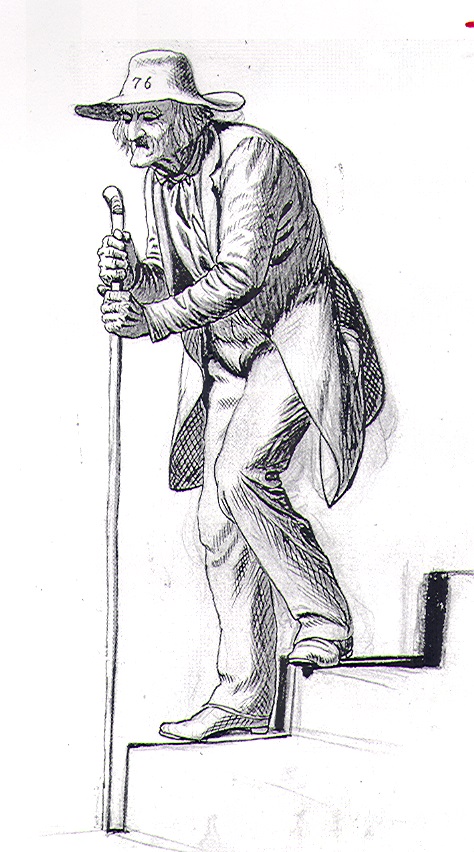
George Caleb Bingham (1811-1879),
“Veteran of ’76.”
Photograph courtesy of the St. Louis Art Museum.
Despite the growth of racism in the 19th century, and that many Americans did not know African Americans fought for the cause of Independence during our founding war (or were wilfully ignorant on the matter), a small number of aged black veterans received some recognition for their service. The largest cohort were those who, like their white comrades, received veterans pensions, and perhaps some notoriety in their own community. A few were recognized in newspapers and at least one book, before or after they died. The following accounts are from my collection, and all but one were included in my book “They Were Good Soldiers.”
If anyone locates other, similar, newspaper or other printed articles or obituaries and would be willing to share them, please contact me at ju_rees@msn.com .
Note: Most of these 19th century accounts contain some errors, but the basic truth of their narratives can be corroborated. Some sources will be provided that both correct the errors and support the truth in these accounts.
____________________________________
Hannah Till, 1824-1825
Current Events, 1820 – Missouri Compromise allows Missouri to become a slave state, establishes Maine as a free state, and bans slavery in the territory west of Missouri. The first organized emigration of U.S. blacks back to Africa from New York to Sierra Leone.
1822 – Denmark Vesey, a free black, organizes an unsuccessful slave uprising in Charleston, SC.. Segregated public schools for blacks open in Philadelphia.
1824 – Liberia, on the west coast of Africa, is established by freed American slave
* * *
Gen. George Washington’s wartime military household had a retinue of cooks and other servants, white and black, free and enslaved, with several supervisors to oversee the whole. Few are known at all beyond mention in the household accounts. The best-known is William “Billy” Lee, the commander-in-chief’s body slave; his biography is included in Douglas R. Egerton’s, Death or Liberty: African Americans and Revolutionary America (New York: Oxford University Press, 2009), pages 3-14. Hannah Till’s story, while not as comprehensive, is nonetheless fascinating, as much by what was set down on paper as for what can be read between those lines.
“1825 – Died at Philadelphia, Mrs. Hannah Till, a black women, who had been cook to General Washington and General La Fayette, in all their campaigns during the war of Independence. The latter at my instance went to see her, at No. 182 South Fourth street, when he was here in 1825, and made her a present to be remembered.” (John F. Watson, Annals of Philadelphia and Pennsylvania, in the Olden Time, two volumes (Philadelphia: Published by Whiting and Thomas, 1856), vol. I, 601.)
The following is from John F. Watson, Annals of Philadelphia, being a collection of memoirs, anecdotes, & incidents of the city and its inhabitants (Philadelphia: For Sale by Uriah Hunt, 1830), 352-353.
“Hannah Till
This is the name of a black woman whom I saw in March, 1824, in her 102d year of age – a pious woman, possessing a sound mind and memory, and fruitful of anecdote of the Revolutionary war, in which she had served her seven years of service to General Washington and La Fayette, as cook, &c. I saw her in her own small frame house, No. 182, south Fourth street, a little below Pine street. Her original name was Long Point – a name given her father for his successful conflict with a buck at that place near Smyrna. She was born in Kent county, Delaware. Her master, John Brinkly, Esq. sold her at the age of 15 years, when she was brought to Pennsylvania. At 25 years of age she was sold to Parson Henderson, and went with hi m to Northumberland. At 35 years of age she was sold to Parson Mason, of New York, with whom she dwelt there until the war of the Revolution; she then bought her freedom, and with her husband was hired into General Washington’s military family as cooks – serving with him in all his campaigns for six and a half years, and for half a year she was lent into the service of General La Fayette. With one or the other of these she was present in all the celebrated battles in which they were engaged. She could speak, in a good strong voice, of all the things she saw in her long life, with better recollection and readier utterance than any other narrator with whom I have had occasion so to converse. I inquired regarding the domestic habits of Washington and others: she said he was very positive in requiring compliance with his orders; but was a moderate and indulgent master. He was sometimes familiar among his equals and guests, and would indulge a moderate laugh. He always had his lady with him in the winter campaigns, and on such occasions, was pleased when freed from mixed company and to be alone in his family. He was moderate in eating and drinking. I asked if she knew that he prayed. She answered that she expected he did, but she did not know that he practiced it. I was the more particular in this, because I had heard directly from Isaac Potts, the public Friend at Valley Forge, that he actually saw him, by chance, at prayer in the bushes at or near his place. I asked her if he ever swore; she answered, that ideas about religion were not very strict, and that she thought that he did not strictly guard against it in times of high excitements, and that she well remembered that on one provocation with her, he called her c—d [colored] fool. General La Fayette she praised greatly – said he was very handsome, tall, slender, and genteel, having a fair white and red face, with reddish hair – that he spoke English plain enough – was always very kind. Her words were very emphatic: – `Truly he was a gentleman to meet and to follow!’
As I was interested in the narratives of this old black woman, I thought she might afford some gratification to Gen. La Fayette himself again to see her; I made him therefore acquainted with the leading facts. As I never saw either of the parties afterwards, I may add from the communications of my sister who knew her and visited her occasionally, especially in her 104th year. She says she received from her questions, such answers as these – ‘I well remember the arrival of the specie to pay the French army, for the house was so crowded that day that my pastry room was used to lodge the specie in, even while she still used the room. She continued with Washington till after Andre the spy was hung. On that day she saw many tears shed by our officers.’ General La Fayette called on her with Messrs. [Tench] Tilghman and Biddle [likely Clement or Nicholas]. To his question, Where was you when General Washington left Morristown? she answered, I remained more than six months with you, Sir, in the same house. He left her, promising to send her money by his son. The sequel was, that her house was embarrassed for arrear groundrents, and she was soon after informed to make herself easy, for La Fayette had cleared it off! and ‘the pious old soul blesses you and him for the interference.’ More was said, but it might savour of gossip to say more in this article. She has since gone to her reward.”
Hannah Till was married to Isaac Till. They are recorded to have had seven children: Andrew Till, born circa 1761; John Till, born circa 1765; Sarah Till, born circa 1771; Daniel Till, born between 1775-1795; Philip Till, born 1775-1795; Isaac Worley Till, born 1778, and William Till, born 1780-1790.
One son was born during the Valley Forge winter: “Isaac Worley Till son to Hannah a free Nigroe woman in full Communion with the Church was born in Gen: Washingtons Camp Valey forge nineteen months ago and baptized in this 4th Sabbath of Augt. 1779”
(Isaac Worley Till baptismal record, 2nd Presbyterian Church, Arch and 3rd Streets, Philadelphia, Pennsylvania.)
Isaac’s birth would have occurred in January or February 1778, at which time Hannah was likely about 40 to 45 years of age.
(Source: C.R. Cole (with Charles L Blockson), “Hannah Till Mother of Isaac Woorley Till,” (Daughters of the American Revolution, commemorative marker research, 2015))
For more on Hannah Till see,
“‘Lately apprehended in the first Maryland regiment …’: African American Women with the Continental Army,” https://www.academia.edu/38515415/_Lately_apprehended_in_the_first_Maryland_regiment_African_American_Women_with_the_Army


(Photo courtesy of the Museum of the American Revolution, Philadelphia, Pa.)
_________________________
Thomas Carney, 1828
Current Events, 1827 – John Russwurm and Samuel Cornish establish the first African American newspaper, Freedom’s Journal, in New York. The paper circulates in 11 states, the District of Columbia, Haiti, Europe, and Canada. Sarah Mapps Douglass, a black educator and contributor to The Anglo African, an early black paper, establishes a school for black children in Philadelphia.
* * *
Daily National Intelligencer, July 22, 1828
“DEATHS … Near the village of Denton, in Maryland, Thomas Carney, a colored man, at the advanced age of 74. At the commencement of the Revolution, Tom enlisted as a soldier under Col. Peter Adams [lieutenant colonel, 7th Maryland Regiment], and soon after was marched to the North, and was in the memorable battle of Germantown. In this action, the Maryland troops played a conspicuous part; but the Americans were compelled to yield to a superior force. Soon after this, Washington retired to Valley Forge, and took up his Winter quarters. The suffering of the army during that severe Winter, are well known to every American. With the spirit of true patriotism, Tom bore huis share of privation and suffering. When the Maryland and Delaware lines were ordered to the south, Tom marched with his brave regiment, and shared, in that quarter, with his companions in arms, the hardships, misfortunes, and glories of the war. At the battle of Guilford Court House, he bore a conspicuous part as a soldier, and has often persisted that, when the Maryland troops came to the charge, he bayoneted seven of the enemy. At Camden, Hobkirk’s Hill, and Ninety six, he bore his part, and was always with his brave regiment under Howard, among the first to the charge. At Ninety-Six, his Captain, (the late Maj. Gen. Benson) received a dangerous wound, but, regardless of nothing but opposing the enemy, he forgot his commander, until ordered to take him to the Surgeon. Though Benson was considerably above the common size, he carried him on his shoulders some considerable distance, to the place at which the surgeon was stationed; but, like a true solder, held on to his musket, that had so often protected him in the hour of danger. At length, overcome by excessive fatigue and heat, as he laid the almost lifeless body of Benson at the feet of the surgeon, he fainted. After he came to himself, he determined to join his regiment again; but, to his great mortification, was peremptorily ordered by the commanding officer to remain, and protect his captain, which he did with care and tenderness. For this kindness and attention, Benson never forgot him, and, whenever he came to this county, invariably paid his first visit to Tom, and, while reviewing the militia, would always have him mounted on a horse, and at his side.”
In actuality, Thomas Carney’s first service was with the Maryland militia (Sarer’s Company, Washington County) in autumn 1777; he and his unit joined the army in time to take part in the October 4 1777 Battle of Germantown. According to historian William Calderhead Carney’s militia company likely spent at least part of the winter of 1778 with the Maryland troops at Wilmington, Delaware, and not at Valley Forge. When he enlisted in the 7th Maryland regiment in the spring of 1778, that also likely occurred in Wilmington.
For more further details of Thomas Carney life see:
William L. Calderhead, “Thomas Carney: Unsung Soldier of the American Revolution,” Maryland Historical Magazine, vol. 84 (Winter 1989), 319-326. https://www.academia.edu/42201834/William_L._Calderhead_Thomas_Carney_Unsung_Soldier_of_the_American_Revolution_Maryland_Historical_Magazine_vol._84_Winter_1989_319-326

(Image courtesy of the Museum of the American Revolution, Philadelphia, Pa.)
_______________________________
Edward “Ned” Hector, 1834
Current Events, 1831 – Nat Turner launches a bloody uprising among enslaved Virginians in Southampton County. William Lloyd Garrison of Boston begins publishing The Liberator, the most famous anti-slavery newspaper.
1833 – American Antislavery Society, led by William Lloyd Garrison, is organized in Philadelphia. For the next three decades, the Society campaigns that slavery is illegal under natural law, and sees the Constitution “a covenant with hell.” Within five years, the organization has more than 1,350 chapters and over 250,000 members.
1834 – August 1 becomes another black American and abolitionist holiday when Britain abolishes slavery in its colonies.
* * *
In March 1777 Edward Hector, a ‘colored man’, was listed as a bombardier in Colonel Thomas Proctor’s Pennsylvania State Artillery Regiment. It was a rank that engendered some skill and responsibility, as bombardiers were ‘those employed about mortars [and other types of artillery]; they drive the fuse, fix the shell, and load and fire the mortar; they work with the fireworkmen, and are the third rank of a private man in a company of artillery’ (note that examined muster roll extracts seem to use the terms bombardier and gunner interchangeably: the ‘fire-workmen’ or ‘fire-workers’ were ‘the youngest commissioned Officers in a company of artillery’). By autumn 1777, perhaps due to the ban on black participation in the newly-enacted militia law or that a black bombardier was superior in rank to a white matross (the least-skilled position on a gun crew), Hector was relegated to being a wagoner in Proctor’s Regiment. Mr Hector never applied for a federal pension, and when he petitioned for a state pension was denied. The year prior to his death he was awarded a one-time 40-dollar gratuity in recognition of his service.
Edward Hector’s death notice, published in the January 1834 Norristown Free Press, noted:
“During the war of the revolution, his conduct on one memorable occasion, exhibited an example of patriotism and bravery which deserves to be recorded. At the battle of Brandywine he had charge of an ammunition wagon attached to Colonel Proctor’s regiment, and when the American army was obliged to retreat, an order was given by the proper officers to those having charge of the wagons, to abandon them to the enemy, and save themselves by flight. The heroic reply of the deceased was uttered in the true spirit of the Revolution: ‘The enemy shall not have my team; I will save my horses and myself!’ He instantly started on his way, and as he proceeded, amid the confusion of the surrounding scene, he calmly gathered up a few stands of arms which had been left on the field by the retreating soldiers, and safely retired with his wagon, team and all, in face of the victorious foe.”
________________________

Jacob Francis, 1839
Current Events, 1837 – Philadelphia blacks, under the leadership of well-to-do Robert Purvis, organize the Vigilance Committee to aid and assist fugitive slaves. Purvis’ wife, Harriett Forten Purvis, the daughter of successful black businessman James Forten, leads the Female Vigilant Society. Robert Purvis is referred to by some as the “President of the Underground Railroad.” First gathering of the Antislavery Convention of American Women, an inter-racial association of various female antislavery groups, becomes the first independent women’s political organization. Founding of the Institute for Colored Youth, which later became Cheyney University, one of the earliest historically black colleges in the United States.
1838 – Second meeting of the Antislavery Convention of American Women, gathered in Philadelphia at the newly built Pennsylvania Hall, is attacked by a mob. The mob burns down the hall, as well as sets a shelter for black orphans on fire and damages a black church. Pennsylvania Hall was open only three days when it fell. Pennsylvania blacks are disfranchised in the revised state Constitution. A Maryland slave named Fred runs away and later becomes Frederick Douglass.
* * *
Jacob Francis, veteran of a 1776 Massachusetts Continental regiment and later in the New Jersey militia, died in 1839, and the 5 August Newark Daily Advertiser republished this notice from the Flemington Gazette:
“Another Hero of the Revolution.— In this village, on Tuesday the 26th of July, JACOB FRANCIS, a colored man, in the 83rd year of his age. He has resided in this place thirty-five years; has been an orderly member of the Baptist Church for thirty years; he has raised a large family, in a manner creditable to his judgement and his Christian character, and lived to see them doing well; and has left the scenes of this mortal existence, deservedly respected by all who knew him. Jacob Francis was a soldier of the Revolution—he served a long tour of duty in the Massachusetts militia, and was some time in the regular army in New Jersey; and we have learned from those who knew him in those days of privation of peril, that his fidelity and good conduct as a soldier were the object of remark, and received the approbation of his officers. For the last few years he received a pension from the government; an acknowledgement of his services to his country which, though made at a late day, came most opportunely to minister to his comfort in the decline of life, and under the infirmities of old age.”
As John L. Bell notes, ‘This was by far the longest death notice in that issue of the Daily Advertiser, and it was reprinted at least as far away as Cleveland’.
Other Sources: National Archives, Revolutionary Veterans Pension, reel 1015, Jacob Francis, ‘a colored man’ (File No. W459). For a transcript of Francis’s lengthy pension account see, John C. Dann (ed.), The Revolution Remembered: Eyewitness Accounts of the War for Independence (Chicago: The University of Chicago Press, 1980), 390-399 or John U. Rees ‘They Were Good Soldiers’: African–Americans Serving in the Continental Army, 1775–1783 (Helion and Company: United Kingdom, 2019), 94-99.
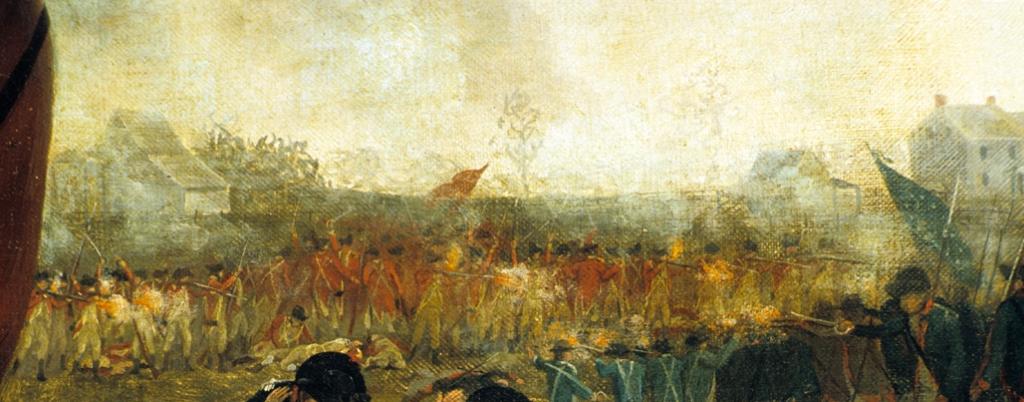
_________________________
Oliver Cromwell, 1852
Current Events, 1849 – Harriet Tubman escapes from slavery. She becomes a major conductor on the Underground Railroad, as well as an advocate for Women’s Rights.
1850 – The Compromise of 1850 includes a controversial Fugitive Slave Law that compels all citizens to help in the recovery of fugitive slaves. Free blacks form more Vigilance Committees throughout the North to watch for slave hunters and alert the black community.
1851 – Federal marshals and Maryland slave hunters seek out suspected fugitive slaves in Christiana (Lancaster County), PA. In the ensuing struggle with black and white abolitionists, one of the attackers is killed, another is seriously wounded, and the fugitives all successfully escape. Thirty-six black men and five white men are charged with treason and conspiracy under the federal 1850 Fugitive Slave Law and brought to trial in federal court at Independence Hall in Philadelphia. This trial becomes a cause celebre for American abolitionists. Attorney Thaddeus Stevens defends the accused by pleading self-defense. All the defendants are found innocent in a jury trial.
1852 – Congress repeals the Missouri Compromise, opening western territories to slavery and setting the stage for a bloody struggle between pro and anti-slavery forces in Kansas Territory.
* * *
Perhaps the best-known black New Jersey Continental may not have had African heritage after all. At 25 years of age, Oliver Cromwell enlisted for the duration of the war in May 1777 and served to June 1783. His discharge certificate, on file with his pension papers, states, ‘Oliver Cromwell Private has been honored with the Badge of Merit for Six Years Faithful Service’. By his own account he ‘was in the Battle of the Short Hills where Captn [James] Laurie was wounded and taken prisoner …’.
In an 1852 newspaper article the interviewer noted Mr Cromwell claimed to have been in the actions at
‘Trenton, Princeton, Brandywine, Monmouth and Yorktown, at the latter place, he told us, he saw the last man killed … he was also at the battle of Springfield, and says that he saw the house burning in which Mrs. [Hannah] Caldwell was shot, at Connecticut Farms [7 June 1780]’.
The first two cited events occurred before his 1777 enlistment, so those claims are suspect, but Cromwell was most likely present at the other battles. The old soldier also recalled quite accurately the 1782–83 organizational change: in 1777
‘he enlisted… in the second Jersey Regiment commanded by Colonel Shreve … [after Captain Laurie’s death in captivity] the deponent was put under the Command of Captain [Nathaniel] Bowman – that not long before the discharge of the Deponent from service – the regiment to which he belonged was reduced to a Battallion – when he thinks he was commanded by Captain Dayton …’.
Cromwell did indeed serve in Bowman’s light infantry company from July 1777 to December 1783; he was then transferred to the Captain Absolum Martin’s (4th) company, Colonel Cumming’s New Jersey Battalion. The question of Oliver Cromwell’s heritage is interesting. In 1852 he was called ‘an old colored man’ and then ‘half-white’; Eric Grundset’s work, Forgotten Patriots, notes that in some records he was termed a ‘Mulatto’, in others Indian. The question will likely never be settled but does bring to mind a related matter. What were the terms used to denote persons of color of mixed blood? Mulatto seems to be reserved for people with black and white parentage; some people so-termed were described as having ‘black hair, [and] yellow skin’, but yellow was not then used as a synonym for mulatto. Mustee, and less often ‘mustezoes’ or ‘Mestizoes’, was used to denote African and Native American forebears, at least in Rhode Island and the Carolinas.
Other sources: National Arrchives Revolutionary Veterans Pension, reel 695, Oliver Cromwell, ‘colored man’ (File No. S34613), including copy of clipping from the Burlington Gazette, New Jersey, 1852.
For more information on sources and other African American veterans see:
‘They Were Good Soldiers’: African–Americans Serving in the Continental Army, 1775–1783 (Published by Helion and Company, United Kingdom; available in the U.S. from Casemate Publishing, Inc.)
Note: Current events information gleaned from, American Anti-Slavery and Civil Rights Timeline, https://www.ushistory.org/more/timeline.htm
